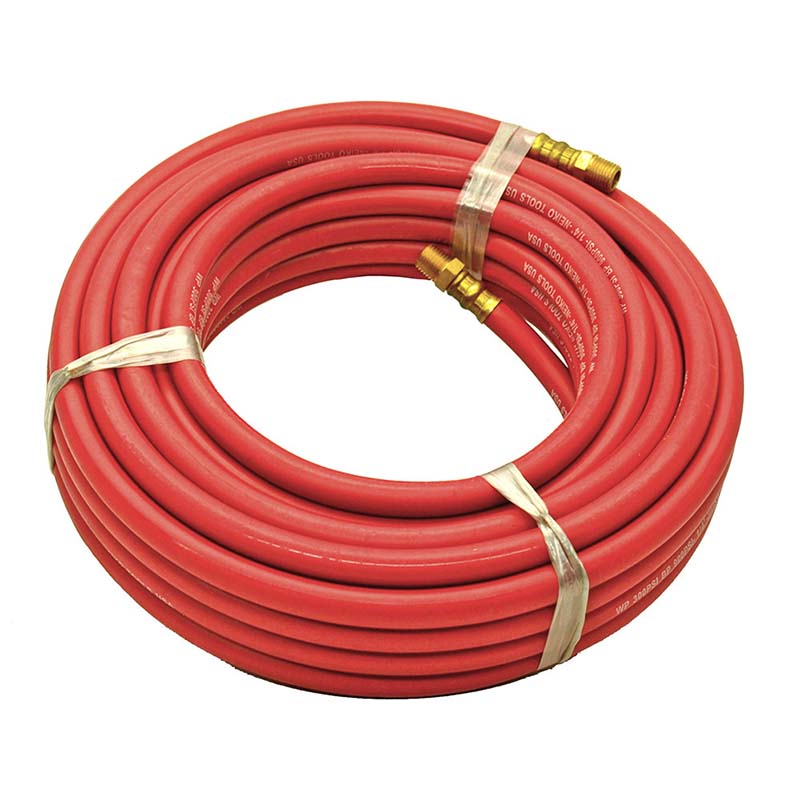Choosing the Right Oxy-Acetylene Welding Hose for Optimal Performance and Safety
Understanding Oxy-Acetylene Welding Hose Features, Applications, and Safety
Oxy-acetylene welding is one of the most versatile welding processes used in various industries, due to its ability to weld and cut metals effectively. A critical component of the oxy-acetylene welding setup is the welding hose, which transports the two gases—oxygen and acetylene—from their respective tanks to the torch. This article delves into the features, applications, and safety considerations of oxy-acetylene welding hoses.
Features of Oxy-Acetylene Welding Hose
Oxy-acetylene welding hoses are designed specifically to handle the high-pressure requirements of gas movement. Typically, these hoses are color-coded; the oxygen line is green, while the acetylene line is red. This color-coding is essential for preventing mix-ups that could lead to dangerous situations.
The hoses are constructed from durable materials to withstand the high temperatures and pressures encountered during welding operations. They are often made from rubber, which is usually reinforced with synthetic fibers to prevent kinks and abrasion. Some hoses may also have a cover that protects against chemical exposure and external damage. Additionally, the internal diameter of the hoses is standardized to ensure compatibility with various torch tips and regulators.
Applications of Oxy-Acetylene Welding Hoses
The applications for oxy-acetylene welding are extensive, making this method popular in several fields. It is commonly used in metal fabrication shops, automotive repair, and construction. The ability to weld metals such as steel, aluminum, and copper makes oxy-acetylene welding indispensable in workshops that undertake diverse projects.
In addition to welding, oxy-acetylene hoses are also utilized for cutting metals. The high temperature generated by the flame allows for precise cuts in various thicknesses of metal, making it a preferred method in both artistic applications and industrial manufacturing.
oxy acetylene welding hose

Moreover, oxy-acetylene welding is frequently employed in maintenance and repair tasks. The flexibility of the equipment, including the hoses, enables welders to effectively reach tight spots or awkward angles, ensuring comprehensive servicing without the need to move larger structures.
Safety Considerations
While oxy-acetylene welding is a highly effective process, it also poses risks if not handled properly. One of the most significant hazards is the potential for gas leaks, which can lead to explosions or fire. Therefore, it is crucial to regularly inspect the hoses for any signs of wear and tear, such as cracks, abrasions, or discoloration. A damaged hose should be replaced immediately to ensure safe operation.
Proper storage of the hoses when not in use is also vital. They should be coiled correctly and stored in a designated area away from sharp objects, chemicals, or any source of heat. When connecting the hoses to the regulators and torch, proper tightening is necessary to prevent leaks. Furthermore, using the appropriate fittings as specified by manufacturers will ensure a secure and safe connection.
Personal protective equipment (PPE) is essential during oxy-acetylene welding operations. Welders should always wear safety goggles or a face shield to protect against harmful rays and sparks. Flame-resistant clothing is also a must, along with gloves to protect the hands from heat and potential burns.
Conclusion
In summary, oxy-acetylene welding hoses are integral components of the welding process, enabling the safe and effective transport of gases required for various welding and cutting tasks. Understanding their features, applications, and potential hazards is essential for anyone using this method. By adhering to safety protocols and ensuring the maintenance of the hoses, welders can minimize risks and enhance efficiency in their operations. With its remarkable versatility and effectiveness, oxy-acetylene welding continues to be a fundamental technique in metalworking and fabrication industries worldwide.
-
Top Quality Oxy Acetylene Hoses for Sale Fit for Welding DemandsNewsJul.28,2025
-
The Future of Pneumatic Air Tubes in IndustryNewsJul.28,2025
-
Superior and Reliable LPG Hose Pipe Solutions for Every NeedNewsJul.28,2025
-
Exceptionally Durable and Versatile Premium Braided PVC TubingNewsJul.28,2025
-
Best Adapters for Connecting Garden Hose to PVC Pipe ConnectionsNewsJul.28,2025
-
The Essential Role of LPG Hoses in Safe and Efficient Gas DistributionNewsJul.16,2025














